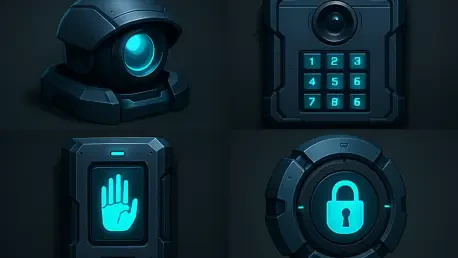In an era where digital transactions dominate the gaming industry, a staggering statistic emerges: over 30% of online game asset trades encounter fraud or bot-related disruptions, shaking user confidence and highlighting the urgent need for robust solutions. This challenge underscores a critical need for innovative security measures in peer-to-peer (P2P) marketplaces, particularly as blockchain-based platforms gain traction. The partnership between Overtake, a P2P marketplace on the Sui blockchain, and World, a network pioneering proof-of-human verification, offers a compelling solution. This analysis delves into how proof-of-human technology is reshaping trust and security in game asset trading, examining current market trends, data-driven insights, and future projections for this transformative approach.
Market Trends Driving Security Innovations in Game Asset Trading
Rising Fraud Threats in a Booming Sector
The game asset trading market has exploded in recent years, fueled by the integration of Web3 technologies like non-fungible tokens (NFTs) and decentralized ledgers. As players trade in-game items, accounts, and currencies with real-world value, the sector’s growth has attracted malicious actors employing bots and Sybil attacks to manipulate systems. Industry reports indicate that marketplaces without robust identity checks suffer significant losses, often deterring mainstream adoption. This persistent threat has pushed platforms to prioritize advanced security protocols, setting the stage for technologies like proof-of-human verification to address vulnerabilities head-on.
Blockchain’s Role in Transforming Trust Mechanisms
Blockchain technology, particularly through platforms like Sui, has redefined ownership and transparency in gaming economies by enabling secure, traceable transactions. However, the anonymity inherent in many blockchain systems can exacerbate fraud risks without additional safeguards. The integration of identity verification into these decentralized environments marks a pivotal shift, balancing privacy with accountability. Overtake’s adoption of World’s proof-of-human system, which uses cutting-edge camera technology called the Orb to confirm user uniqueness, exemplifies how blockchain marketplaces are evolving to meet user demands for safety without compromising the decentralized ethos.
Bridging Web2 and Web3 User Experiences
A notable trend shaping the market is the push toward a hybrid “Web 2.5” experience, blending familiar Web2 interfaces with Web3 capabilities. Features such as social logins, instant USDC settlements, and gas fee sponsorships aim to lower entry barriers for traditional gamers unfamiliar with blockchain intricacies. By incorporating proof-of-human tech, platforms like Overtake enhance this transition, ensuring that even novice users can trade with confidence, knowing fraudulent accounts are minimized. This convergence of user-friendly design and robust security is becoming a benchmark for competitive advantage in the industry.
Data Insights and Projections for Proof-of-Human Adoption
Current Impact on Fraud Reduction
Early data from platforms integrating proof-of-human technology reveals a promising decline in fraudulent activities, with some marketplaces reporting up to a 40% drop in bot-driven transactions after implementation. For Overtake, the gradual rollout of World ID—starting with seller onboarding and extending to high-value trades—complements its existing 2-of-3 multisig escrow system, creating a fortified trading environment. This dual-layered approach not only secures transactions but also builds a reputation for reliability, a critical factor in attracting cautious Web2 gamers to on-chain economies.
Scalability Challenges and Regional Disparities
Despite its potential, the scalability of proof-of-human tech faces hurdles, particularly in regions with limited access to verification tools like the Orb. While expansion efforts are underway in major markets such as the U.S., disparities in technological infrastructure could delay adoption in less-connected areas. Market analysis suggests that addressing these gaps through alternative verification methods or partnerships with local tech providers will be essential. Projections indicate that by 2027, over 60% of blockchain-based marketplaces may adopt similar identity solutions if accessibility improves, highlighting the urgency of global outreach.
Future Growth and Industry Standardization
Looking ahead, the game asset trading sector is poised for exponential growth, with estimates predicting a doubling of transaction volumes within the next few years, driven by enhanced security measures. Proof-of-human technology could become a standard feature as regulatory frameworks around digital identity and blockchain transactions tighten. Analysts foresee marketplaces like Overtake expanding trading categories and localizing payment options, further boosting liquidity and user engagement. The alignment of such innovations with industry-wide security trends points to a future where trust is a cornerstone of digital trade, potentially reshaping user expectations across gaming platforms.
Reflecting on Market Shifts and Strategic Pathways
Looking back, the analysis of proof-of-human technology’s integration into game asset trading uncovered a landscape marked by both opportunity and challenge. The notable reduction in fraud and the push toward seamless Web2-Web3 integration stood out as game-changers for platforms like Overtake. For stakeholders, the path forward involves prioritizing partnerships with verification providers to strengthen user trust while investing in accessibility solutions to bridge regional gaps. Strategically, educating users about privacy-preserving security measures proves vital to dispel misconceptions and encourage adoption. These steps, taken in response to evolving market demands, pave the way for a more secure and inclusive digital gaming economy, offering a blueprint for sustained growth and innovation.









